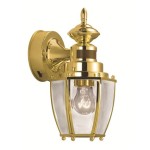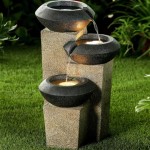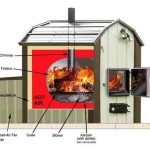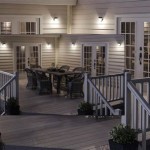```html
Understanding Outdoor Recessed Lighting Housing
Outdoor recessed lighting offers a sophisticated and functional solution for illuminating exterior spaces. A critical component of these lighting systems is the housing, which provides the structure and protection for the light fixture itself. Selection and installation of the correct housing are paramount to ensuring the longevity, performance, and safety of the entire outdoor lighting setup. This article will explore the various aspects of outdoor recessed lighting housing, including types, materials, installation considerations, and maintenance.
Types of Outdoor Recessed Lighting Housing
The market offers a diverse range of outdoor recessed lighting housings, each designed to meet specific installation requirements and environmental conditions. Understanding these types is crucial for selecting the appropriate housing for a particular outdoor lighting project. The primary distinctions lie in construction materials, mounting styles, and suitability for different types of light bulbs.
IC-Rated Housings: IC, or Insulation Contact, rated housings are designed for installation where the housing may come into direct contact with insulation. This is a critical safety feature, especially in soffits or areas with blown-in insulation. IC-rated housings prevent the risk of overheating and fire hazard by allowing heat to dissipate safely, even when surrounded by insulating materials. These housings are typically constructed with a double-wall design and thermal protection features.
Non-IC-Rated Housings: Non-IC-rated housings, conversely, are not designed for contact with insulation. These housings require a minimum clearance from insulation to prevent overheating. Installing a non-IC-rated housing in an area with insulation poses a significant fire risk. They are generally less expensive than IC-rated housings and are suitable for installations where the housing is in open air or is separated from insulation by a sufficient distance.
Shallow Housings: In situations where ceiling or soffit space is limited, shallow housings provide a viable solution. These housings are designed with a reduced depth, allowing installation in areas where standard-sized housings would not fit. They often accommodate smaller bulbs or LED modules and can be IC-rated or non-IC-rated depending on their specific construction.
Air-Tight Housings: Air-tight housings are designed to minimize air leakage through the recessed lighting fixture. This is particularly important in energy-efficient homes, as air leakage can contribute to drafts and increased heating or cooling costs. These housings typically feature gaskets and seals to prevent air from escaping around the trim and housing body. They can improve overall energy efficiency and reduce condensation problems.
Remodel Housings: Remodel housings are specifically designed for installation in existing ceilings or soffits. They utilize clips or tension springs to secure the housing to the surrounding material, eliminating the need for access from above. These housings are ideal for retrofitting existing lighting systems or adding recessed lighting to finished spaces without requiring extensive demolition.
New Construction Housings: New construction housings are designed for installation during the building process. They typically feature mounting bars that attach to joists or rafters, providing a secure and stable platform for the housing. These housings are generally easier to install in new construction projects, as access to the framing is readily available.
Materials Used in Outdoor Recessed Lighting Housing
The materials used in the construction of outdoor recessed lighting housings significantly impact their durability, resistance to corrosion, and overall performance. Selecting the appropriate material is essential for ensuring the housing can withstand the harsh conditions of outdoor environments. Key considerations include resistance to moisture, UV exposure, and temperature fluctuations.
Aluminum: Aluminum is a popular choice for outdoor recessed lighting housings due to its excellent corrosion resistance and lightweight properties. It is also a good conductor of heat, which helps to dissipate heat generated by the light bulb. Aluminum housings are often powder-coated or anodized to further enhance their resistance to corrosion and weathering.
Stainless Steel: Stainless steel offers superior corrosion resistance compared to aluminum, making it an ideal choice for harsh environments, such as coastal areas with high salt content. Stainless steel housings are more expensive than aluminum housings but provide a longer lifespan and require less maintenance. They are also aesthetically appealing and provide a sleek, modern look.
Plastic: Plastic housings, typically made from polycarbonate or other durable polymers, are a cost-effective option for outdoor recessed lighting. While they are not as resistant to corrosion as aluminum or stainless steel, they are lightweight, easy to install, and resistant to impact. Plastic housings are often used in conjunction with other materials, such as aluminum heat sinks, to improve their overall performance.
Galvanized Steel: Galvanized steel housings provide a good balance of strength and corrosion resistance. The galvanization process involves coating the steel with a layer of zinc, which protects it from rust. Galvanized steel housings are typically used in applications where the housing is not directly exposed to the elements but still requires some level of corrosion protection.
In addition to the housing material itself, the trims and other components of the recessed lighting fixture also play a crucial role in its overall durability. Trims are often made from aluminum, stainless steel, or plastic and are available in a variety of finishes to match the surrounding architecture.
Installation Considerations for Outdoor Recessed Lighting Housing
Proper installation of outdoor recessed lighting housing is essential for ensuring the safe and reliable operation of the lighting system. Incorrect installation can lead to electrical hazards, water damage, and premature failure of the lighting fixture. Several key considerations must be taken into account during the installation process.
Location and Placement: The location of the recessed lighting housings should be carefully planned to provide adequate illumination and enhance the aesthetic appeal of the outdoor space. Considerations should include the intended use of the space, the desired level of brightness, and the architectural features of the building. Proper placement can minimize glare and shadows, creating a comfortable and inviting environment.
Wiring and Electrical Connections: All wiring and electrical connections must comply with local electrical codes and regulations. It is important to use weatherproof connectors and junction boxes to protect the wiring from moisture and corrosion. A qualified electrician should be consulted to ensure that the wiring is properly installed and grounded.
Waterproofing and Sealing: Outdoor recessed lighting housings must be effectively waterproofed to prevent water from entering the housing and causing damage to the electrical components. This involves using gaskets and seals to create a watertight barrier around the trim and housing body. Proper waterproofing is particularly important in areas with high rainfall or humidity.
Support and Mounting: The recessed lighting housing must be securely supported and mounted to the surrounding structure. This typically involves using mounting bars or clips to attach the housing to joists or rafters. Ensure that the mounting hardware is appropriate for the type of housing and the building material.
Insulation Clearance: If using non-IC-rated housings, maintain the required clearance from insulation to prevent overheating. Consult the manufacturer's instructions for the specific clearance requirements. Failure to maintain proper clearance can result in a fire hazard.
Trim Selection and Installation: The trim is the visible part of the recessed lighting fixture and plays a significant role in its overall appearance. Select a trim that is appropriate for the housing type and the desired aesthetic. Ensure that the trim is properly installed and securely attached to the housing.
Testing and Inspection: After installation, thoroughly test the lighting system to ensure that all fixtures are functioning properly. Inspect the wiring and connections for any signs of damage or loose connections. Address any issues immediately to prevent potential problems in the future.
By carefully considering these installation factors, homeowners and contractors can ensure that outdoor recessed lighting housings are installed safely and effectively, providing years of reliable performance.
Ultimately, selecting the right outdoor recessed lighting housing involves a careful assessment of the specific application, environmental conditions, and budget constraints. By understanding the different types of housings, materials, and installation considerations, individuals can make informed decisions and create a safe, functional, and aesthetically pleasing outdoor lighting system.
```
Recessed Lighting For Exterior Spaces Rensen House Of Lights

Exterior Recessed Soffit Lighting Aspectled

Exterior Lighting By Visiv Features Recessed Lights And Spot Up Klassisch Häuser Atlanta Von Outdoor Houzz

Install Soffit Lighting Lumary Smart Recessed

Outdoor Recessed Lighting Guide Tutor

Guide To Choosing The Right Recessed Light Fixtures For Your Home Exterior

Soffit Lighting Installing Outdoor Recessed Lights

Outdoor Recessed Soffit Lighting Pro Outdoors Llc

In Outdoor Recessed Lighting Pics

8 Outdoor Recessed Lighting Ideas For Your Porch Flip The Switch
Related Posts







